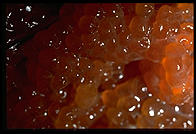
Macro Photography
how to take close-up pictures of small things by Philip Greenspun; revised January 2007
Site Home : Photography : Macro Photography

how to take close-up pictures of small things by Philip Greenspun; revised January 2007
Site Home : Photography : Macro Photography

macro \'mak-(.)ro-\ aj [macr-] 1: excessively developed : LARGE, THICK 2: of or involving large quantities 3: GROSS
Taking close-up pictures of small things is called "macro photography." I have no idea why. Perhaps because the small things in macro photography are generally larger than the things you are taking pictures of when doing "micro photography". If you really want to be pedantic then you should say you are doing "photomacrography".
Point and shoot digital cameras can have remarkable macro capabilities, but for best results you want a single-lens reflex camera. These allow you to attach special-purpose macro lenses and show you in a bright optical viewfinder what you will get on the sensor.
A typical setup might be a
In the film world, the 35mm camera systems had comprehensive range of macro lenses and accessories and some medium format systems, such as the Rollei 6008 would have at least a few lenses and extension tubes. Only the extremely patient ever did macro photography with a 4x5 inch view camera.
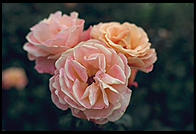
In the good old days a 35mm single-lens reflex camera came with a 50mm
"normal" lens. These lenses were extremely light, rugged, and high
quality, so naturally the consuming public abandoned them for heavy,
fragile, low quality zooms. But that's another story... Anyway,
suppose that you are out in the woods with your Canon EOS 5D, a
full-frame camera and a 50mm normal lens, and you want to take a
picture of the tip of a pine needle. [Everything in this section
applies equally to using a 30mm prime lens, e.g.,
First, though, you want to take a picture of the moon. That's pretty far away, so you feel comfortable setting the lens focusing helical to "infinity". The "nodal point" of the optics will now be 50 millimeters from the plane of the sensor. [Note: exposure for the moon should be roughly f/11 and 1/ISO-setting.]
The effort of setting up your tripod is so great that you become tired and fall asleep. When you wake up in the morning, there is a bear standing 10 feet away. You refocus your 50mm lens to get a picture of the grizzly. As you turn the helical from "infinity" to "10 feet", notice that the optics are racked out away from the sensor. The nodal point is a bit farther than 50 millimeters from the sensor plane. The lens is casting an image circle somewhat larger than the 24x36mm sensor. Some of the light gathered by the lens is therefore being lost but it isn't significant.
After snapping that photo of the bear, you notice that his fangs are glistening. These aren't going to appear very large in your last shot, so you move up until you are about 1.5 feet from the bear. That's about as close as the lens helical will let you focus. The nodal point is now pretty far from the lens. Extra light is spilling off to the edges of the frame , but still not far enough to require an exposure correction. The bear's face is 1.5 feet high. You've oriented the camera vertically so that the face fills the 36mm dimension. 36mm is about 1.5 inches. So that means you are working at "1:12". The subject is 12 times the size of the subject's image on the sensor.
You're losing some light, but also you notice that you don't have too much depth of field. A 50mm lens focussed down to a foot from the subject only has a depth of field of 1/16th of an inch at f/4. No problem. You haul out a big electronic flash and stop down to f/11. Now your depth of field is a whopping ... 1/2 inch.
Looking down, you become fascinated by some pattern's in the bear's claws. Each one is about 1.5 inches long. You'd like to fill the sensor's long dimension (36mm) with a claw, which means that the subject and its image will be the same size. You want to work at "1:1". But the folks at the lens factory skimped on the helical. You can't rack your optics out far enough to focus at 1:1. It looks like that pine needle tip photo is completely out of the question.
Why did Canon limit your ability to focus close? For starters, at 1:1 the lens would be so far away from the sensor that it would cast a huge image circle. The standard 24x36mm frame would only be a tiny fraction. So only about 1/4 of the light gathered by the lens would reach the film, i.e., you'd have a two f-stop underexposure if you used the same exposure setting that you'd used for the picture of the bear when he was 10' away. A scene that required a lens setting of f/16 at infinity would require a lens setting of about f/8 at 1:1. All this other light would be bouncing around inside your camera and lens, reducing contrast. Finally, a fixed stack of optical elements can't be designed to form sharp images at so many different focussed distances.
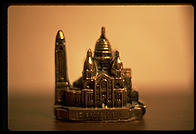
Your eyes don't focus so great on really small things either. Do you try to pull your cornea a foot away from your retina? No. You stick a magnifying glass in front of your cornea. You can do the same thing for your normal lens. Unlike your cornea, it even has convenient threads for attaching a magnifying glass. The magnifying glass screws into the same place where a filter would go.
A camera store could never sell you a "magnifying glass" for $50 so they call these things "supplementary lenses" or "close-up lenses". Good things about close-up lenses:
Bad things about close-up lenses:
Close-up lenses are not a common professional choice, but they are described fairly thoroughly in the Kodak Professional Photoguide.
At right: a model of Sacre Coeur, captured with a Minolta 50mm lens and single-element Minolta-brand close-up lens. Perhaps not the world's best image, but keep in mind that the photographer was 11 years old at the time of exposure.
Macro zoom lenses are not macro lenses. They don't allow significantly greater magnification than a 30mm or 50mm normal lens and they deliver low quality.
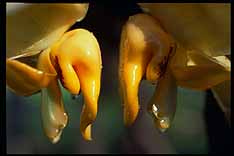
What you want is a macro lens. Fortunately, it is difficult to buy a bad macro lens. This is kind of odd in a world where 90 percent of the lenses sold are bad. Perhaps it is because anyone in the market for a macro lens is already fairly sophisticated and quality-conscious. Partly it is because it is easier to make a single focal-length lens than a zoom.
The best macro lenses are the latest autofocus mount models made by Canon and Nikon, typically in focal lengths ranging from 50 to 200mm. Each lens will focus continuously from infinity to 1:1. You can shoot the moon and capture the bear claw without stopping to change lenses or screw in filters. How do these lenses work? Do they just have a much longer helical than the 50mm normal lens? Yes and no.
Yes a macro lens helical has much more travel than a normal lens helical. You can watch the front element move an inch or two. However, these helicals aren't just pushing a stack of glass back and forth like the 50mm's helical. Inside one of the elements is moving ("floating") so that the optical design changes to a more appropriate one for close-up photography. Thus you get sharp images at all focussed distances.
How do you choose a focal length? The same way you do with a non-macro lens. If you can't get very close to your subject at a soccer game, you don't pull out a normal lens; you bring out a 300mm telephoto lens. If you can't get close to an insect without it getting scared and flying away, then you want the 200mm lens and not the 50. If you want to compress features in a woman's face, you use a 105mm lens rather than a short wide angle lens. It is the same with macro work; longer lenses give you a flatter perspective.
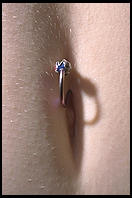
At right is an image (from my Christina
page) taken with an older design
Check the Canon and Nikon system pages for a current list of all the macro lenses made by those companies for their bodies.
Sigma, Tamron, and Tokina make excellent single focal length (prime) macro lenses. If you're using a system other than Canon or Nikon, these may be better quality than your own manufacturer's lens. If you're using Canon or Nikon, you might be able to save a few dollars, at the expense, perhaps, of slightly less rugged mechanical construction. Among the three companies, Tamron historically has produced the best macro lenses.
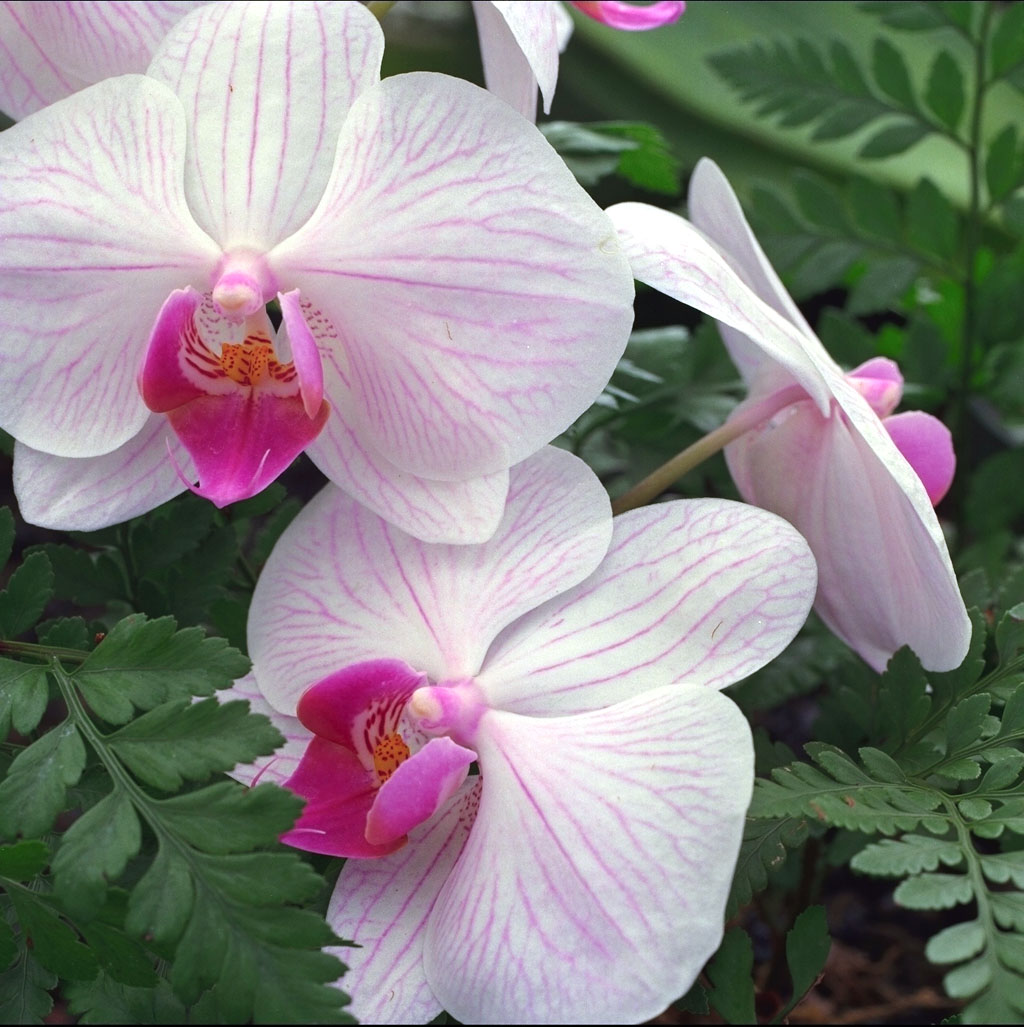 |
If you feel like spending a lot of money then what you want is a 6x6 cm Rollei 6008 and digital back. The Schneider 150 is probably the best macro lens available for the Rollei (only $3425), though if you're using a digital back with less than a 60mm sensor size, the Schneider 90mm macro ($3900) might work nicely. Rollei probably has the most intelligently designed macro system in the world. At left, orchids in Hawaii with the older 120 Zeiss macro lens, Kodak Gold 100 film (120 size naturally), tripod, f/16 and 1/15th of a second. |

Unless you are using close-up lenses, when doing any kind of macro work, you always have to consider the effective f-stop. Even if you are using the SLR body's built-in meter, which will correct automatically for light loss, you can't turn off your brain. Why not? Because the effective aperture affects picture quality.
Taking pictures through a pinhole results in tremendous depth of field but very low sharpness due to diffraction. This is why lenses for a 35mm film camera stop at f/22 and don't go to f/45 or f/64. Large format camera lenses provide these smaller apertures for two reasons: (1) the lenses are longer (f/64 on a 210mm lens is not all that small a hole); (2) the negative won't be enlarged very much.
If you're at 1:1 and have selected f/22 on the macro lens barrel, you need to look at the lens markings and/or the close-up exposure dial in the Kodak Professional Photoguide to learn that your effective aperture is f/45.
If you're using a handheld meter, you absolutely must use these corrections (e.g., meter says f/22 but you're focussed down to 1:1 so you set f/11 on the lens barrel).
[Note: Nikon bodies show you the effective aperture in the viewfinder, a really great feature for macro use; Canon EOS cameras do not.]
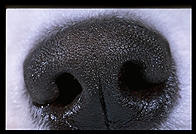
A good quick and dirty lighting technique is to use a through-the-lens
(TTL) metered flash with a dedicated extension cord
(
Lighting is the most important and creative part of any kind of photography. We have an entire book chapter on the subject that might be worth reading.
The Samoyed nose at right belongs to Alex, captured with a Canon EOS-5, 180/2.8 macro lens, and TTL-metered Canon flash. Below: a foot recently pulled out of one of those weird sandals with all the bumps. Nikon 8008, 60/2.8 lens, SB-24 lens with SC-17 cord
Combining everything we've learned up to this point, let's look at a case study: the aquarium. The items inside are pretty close, so you need a macro lens. If you put a rubber lens hood on the front of the lens, then you can mush it up against the glass and avoid reflections. Now you need light. Well, you can just get a flash on an extension cord and point it into the aquarium from just about anywhere.
Here are some examples from the public aquarium in Monterey, taken with a Nikon 8008, 60mm AF macro lens (set for manual focus), SB-24 flash, SC-17 extension cord. I wiped the glass with a handkerchief, asked my friend to hold the flash, and pushed the lens hood up against the glass:
People often write in wondering "How did you manage to get a lawyer in that last frame..."
With a depth of field of around one millimeter for precise macro work, camera positioning and focus become critical. If you have a good tripod and head, you'll find that you have at least 10 controls to adjust. Each of them will move the camera. None of them will move the camera along the axis that you care about.
That's why people buy macro focusing rails, e.g.,
The photos below are snapshots from the garden of the
Getty Center. They were taken with a fancy
In the Canon EOS system, going beyond 1:1 is as simple as
buying
(Flower interior at above left was captured with a traditional EOS film body; the jelly bean image at above right was taken with a D30 digital body (party like it's 2001).)
If you don't have a Canon EOS system and the special 1-5X lens, going beyond 1:1 requires more than buying a lens and turning the focus ring.
First, you can get a bellows (flexible accordion) and/or some extension tubes. These will let you push the lens farther away from the camera body. Extension tubes are rigid and tough; they only let you separate your body and lens in fixed increments. Bellows are delicate but they let you continuously control the lens distance from the body. How much magnification this extra extension will get you depends on the focal length of the lens. If you have a 1000mm lens that already needs its nodal point 1000mm from the sensor plane to focus at infinity, then a 50mm extension tube isn't going to be worth much. However, if you have a 50mm lens, then that same 50mm extension will take you all the way to 1:1.
Second, you probably want a "reversing ring" for your lenses so that you can turn the back element of the lens toward your subject. Why? Think about the normal way you use a lens. You are taking a picture of the Statue of Liberty. The Statue of Liberty is larger than 24x36mm. So you point the front element of the lens at the statue and the back element at the (smaller) sensor. Your lens is designed to work like this, taking the large and compressing it into the small. However, if you are working at 10:1, where the tip of a pine needle is going to take up a big portion of the frame, you want the lens to take the small and expand it into the large. So you want to just flip the lens around.
Third, once you've reversed the lens, you probably want some way to
retain the automatic diaphragm. You want the aperture to remain fully
open until just before your exposure and then close down to the
selected shooting aperture. Rollei medium-format cameras have an
all-electric interface between camera and lens, so this is done with
clean and reliable electric contacts. Canon EOS would work the same
way except that, after more than 15 years, Canon hasn't bothered to
manufacture a bellows for the EOS system. An independent company,
Novoflex, does make a bellows for Canon EOS, but for most people the
More: John Shaw's Close-ups in Nature .

|
At left are a couple of Ant Robots built at the MIT AI Lab by James McLurkin. Photographed with Canon EOS-5 and Canon 50/2.8 macro lens (lit by off-camera 430 EZ flash). This lens only goes to 1:2.
At right is a detail of the ant claws, which was taken with the
|

|
Top photo: Salmon roe. Nikon 60/2.8, Fuji Velvia, SB-24 flash, SC-17 extension cord, from Travels with Samantha, Chapter XII.
Frog: Canon EOS 50 macro. 430EZ with Off Camera Cord 2. From Costa Rica.
Orchids: Canon EOS 50 macro. Tripod and natural light. Fuji Velvia.
From Hacienda Baru in Costa Rica.
Text and pictures copyright 1991-2018 Philip Greenspun.